victoria temperance hall
victoria temperance hall
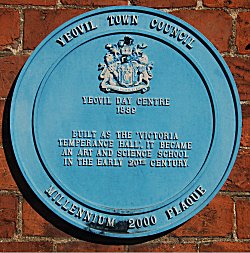 Towards
the end of the
19th century
there was a
strong
temperance
movement in
England - not
just Yeovil
where there were
two temperance
hotels and two
temperance pubs
(yes, really).
Towards
the end of the
19th century
there was a
strong
temperance
movement in
England - not
just Yeovil
where there were
two temperance
hotels and two
temperance pubs
(yes, really).
The Victoria Temperance Hall, on the corner of Union Street at its junction with South Street, was built of local red brick in 1887-88 and opened in 1889. It contained two large rooms, holding 300 and 200 people respectively. It was built on the site of the yard of the Yeovil Mineral and Aerated Water Company.
The building was intended as a local commemoration of Queen Victoria's jubilee. The foundation stone was laid by Lady Theodora Guest in July 1887. The building, consisting of a hall on the upper floor and several rooms on the ground floor, was designed by C and CB Benson, Yeovil architects, and the builder was Mr Andrews of Thornford with a contract price of £968 (in excess of £1.3 million at today's value using the 'economic project cost' algorithm).
Whitby's Yeovil
Almanack of 1889
noted that the
Independent
Order of Good
Templars met on
Thursdays, the
Church of
England
Temperance
Society (Adult
Branch) met
alternate
Tuesdays,
various Bands of
Hope used the
hall as did the
United
Temperance
Committee,
composed of
representatives
of all the
Temperance
organisations in
the town.
From 1900 to
1903 Whitby's
Yeovil Almanack
Advertiser
promoted day
and evening
classes at the 'Government Art
and Science
School' in the
hall with day
classes at
£1.1s.0d. per
quarter of 10
consecutive
weeks and
evening classes
at 3s. per term.
Courses included
Physiography (ie
physical
geography),
drawing, etc.
For several years the Victoria Hall was the town's library. It was opened in 1920 by Miss KM Chaffey, with the initial costs being made by public subscriptions. Miss Chaffey had started the "Everybody's Library" in Yeovil in 1891. The library moved in 1928 when the new purpose-built library opened in King George Street.
|
Yeovilians remember... Many thanks to Mike Bolton for the following memories - "The Victoria Temperance Hall was for some time in the 1940's to 1960's the home of St John's gym and boys club, of which I was member. The club ran a number of successful football teams that played in local leagues. The senior team latterly played their home matches in the Larkhill Stadium (formerly the greyhound track and stock car racing venue at the top of Larkhill Road. The "managers" in my time were Pop Warren and Harold Rendall, among others. Gymnastics was a feature and there was a snooker table on the first floor. Camping holidays were also organised. I remember going to Churston Ferrers near Paignton and to somewhere near Littlehampton. On one memorable occasion, Frankie Vaughan visited the club and the Western sent a photographer. I know that my mother bought a copy." |
Now the South Street Centre, it is the home of Yeovil Day Centre.
gallery

An advertisement for the Art and Science School at the Victoria Hall, from the 1900 edition of Whitby's Yeovil Almanac Advertiser.

From the Cave
Collection
(colourised),
Courtesy of South Somerset Heritage Collection
A photograph, taken in the 1960s, of the Victoria Temperance Hall with Union Street at right. At bottom left are sales display units in the forecourt of the South Yeovil Service Station. The houses and shop premises of JT Lowe Ltd, to the left of the hall, were demolished shortly after this photograph was taken.
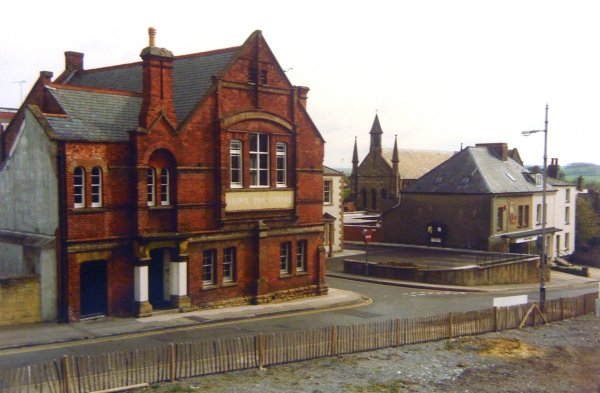
The fence is in front of what had been the South Yeovil Service Station (previous photo). This photograph, of about 1992, looks across to the Day Centre (the former Victoria Temperance Hall) and Union Street.
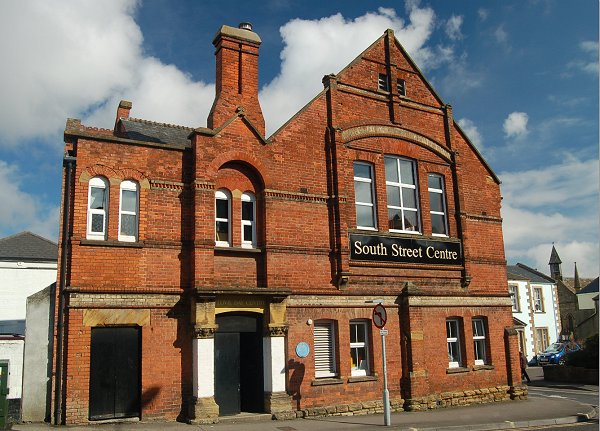
The South Street elevation, photographed in 2013. The hall is now called the South Street Centre.
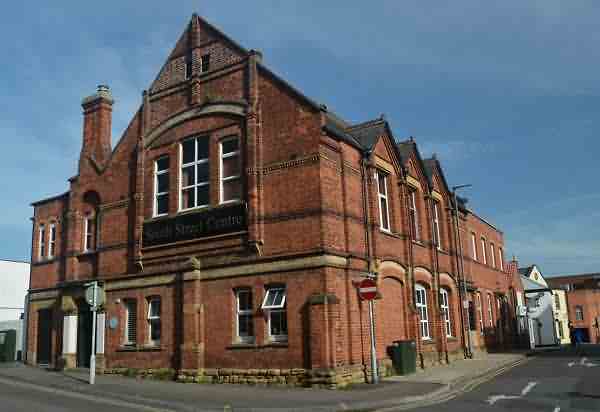
This photograph
features in my
book "Yeovil
In 50 Buildings"
.... and photographed in 2017.
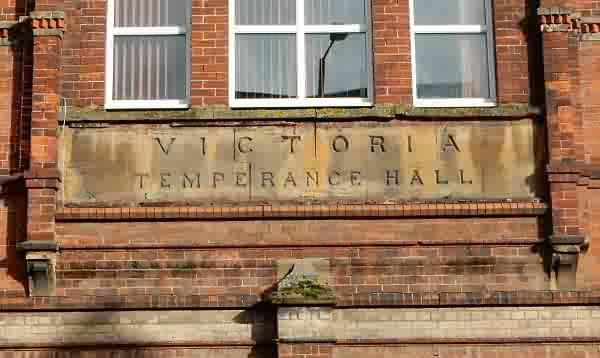
During the storms of January / February 2018 the 'South Street Centre' sign was lost, revealing the building's original signage - still on display today (2024).
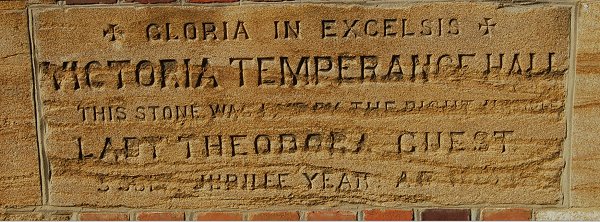
The foundation stone in Union Street, laid by Lady Theodora Guest. Photographed in 2013.
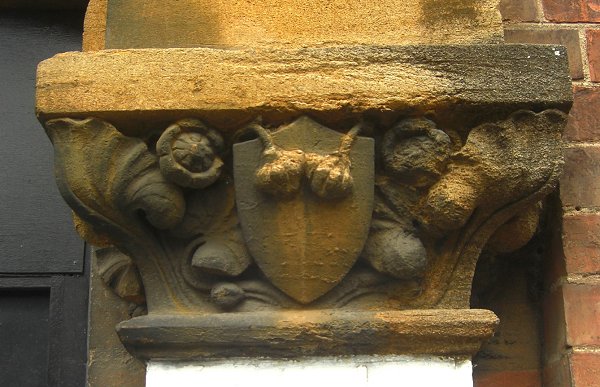
A decorative carved stone capital flanking the South Street entrance. Photographed in 2013.
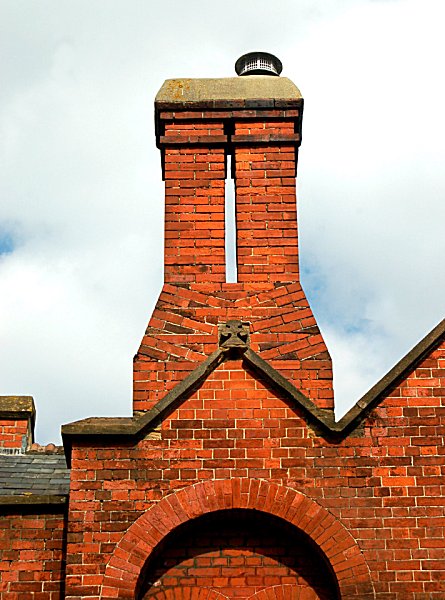
This photograph
features in my
book "Yeovil
In 50 Buildings"
This fantastic example of Victorian brickwork demonstrates the craftsman's skill as well as the detail that was lavished on such buildings.
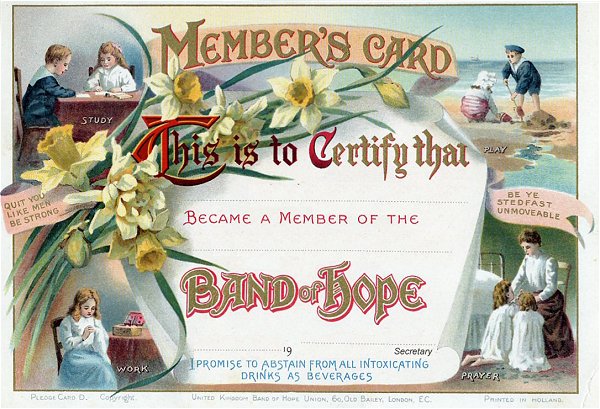
A 'Band of Hope' membership card from around the time of the First World War.